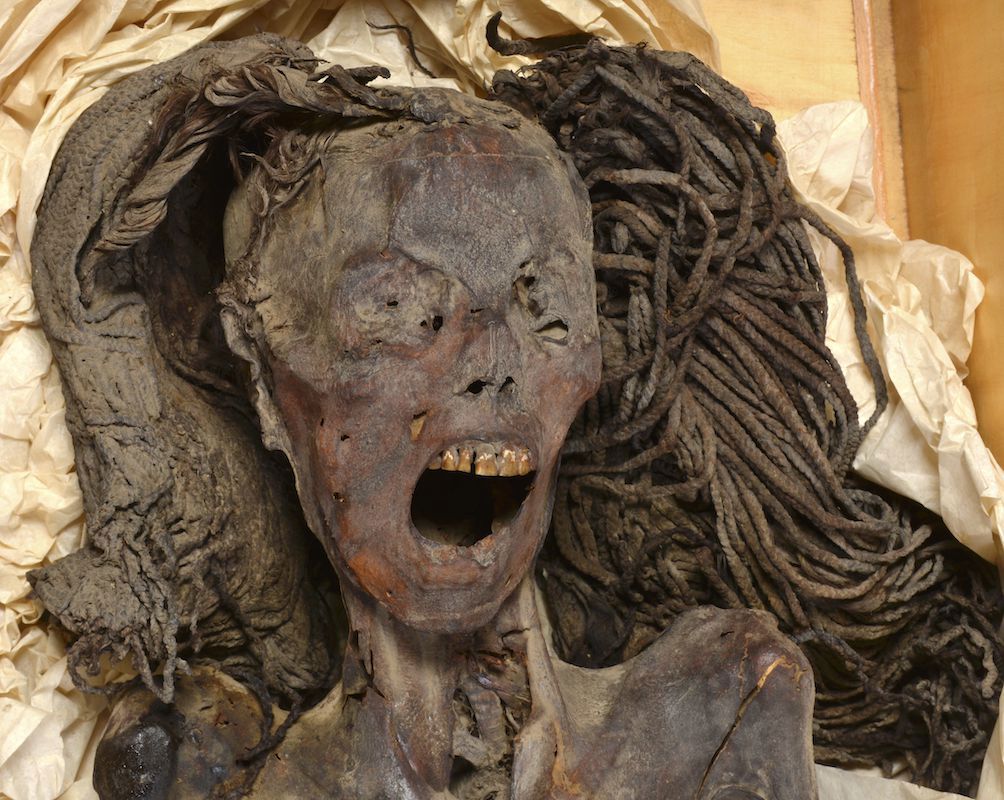
A new study has offered fresh clues into how a famous ancient Egyptian mummy, dubbed the ‘Screaming Woman’, likely died.
Using new, state-of-the-art techniques, the female mummy was “virtually dissected” using CT scans.
The mummy was initially uncovered in Deir Elbahari during an archaeological expedition to Egypt by the Metropolitan Museum of New York in 1935.
READ MORE: Surprising translation of 3500-year-old clay tablet
It was found among the embalmed remains of the relatives of Senmut, the architect and overseer of royal works in Egypt in the 1400s BC, as well as reputedly the lover of the famed Queen Hatschepsut.
Numerous mummified remains were found in the burial chamber, but this mummy stood out because of the woman’s expression: her face was contorted and her mouth locked wide open, as if in a scream.
Initially, it was thought that the expression may be due to poor embalming processes, which allowed her mouth to fall open.
Her organs – including the brain, diaphragm, heart, lungs, liver, spleen, kidneys, and intestine – all remained intact, in defiance of usual mummification practices of the era.
This added weight to the theory that her embalming was hasty or not properly performed.
However, a new analysis conducted by Cairo University professor Sahar Saleem has undermined this theory.
Saleem found the woman, believed to be aged around 48 when she died, was embalmed with costly embalming materials frankincense and juniper, which had to be imported from the eastern Mediterranean and east Africa or southern Arabia, respectively.
Great care appeared to have been taken with her mummification, as she remained incredibly well-preserved, despite 3500 years having passed since her mummification.
Her natural hair had been dyed with henna and juniper and she was adorned with a long wig, made from fibres from the date palm.
This had further been treated with quartz, magnetite, and albite crystals, most likely to stiffen the locks and give them the black colour favoured by ancient Egyptians because it represented youth.
“(This) contradicts the traditional belief that a failure to remove her inner organs implied poor mummification,” said Dr Saleem.
While scans showed the woman had suffered from mild arthritis during her life and had several lost or broken teeth – possibly removed by rudimentary dentists of the time – no definitive cause of death was found.
“The mummy’s screaming facial expression in this study could be read as a cadaveric spasm, implying that the woman died screaming from agony or pain,” Dr Saleem hypothesised.
Cadaveric spasm is a rare form of muscular stiffening, typically associated with violent deaths under extreme physical conditions and intense emotion.
“The Screaming Woman is a true ‘time capsule’ of the way that she died and was mummified.”
The findings of the research were published in the scientific journal Frontiers in Medicine today.
links to content on ABC
9News





